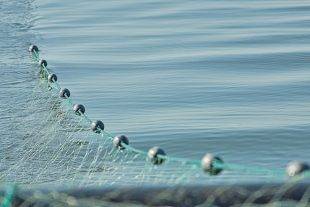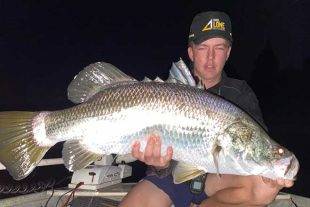In 2024, Fisheries Queensland completed a stock assessment on king threadfin in the Gulf of Carpentaria using the most current biological data, and commercial and recreational catch data to:
- determine the sustainability of fish stocks
- inform management decisions
- inform the development of a harvest strategy.
In this assessment, 8 scenarios were run covering a range of modelling assumptions. Results indicated that the number of adult king threadfin (spawning biomass) was between 13% and 44% of unfished levels in the Gulf of Carpentaria at the start of 2023. The model estimated that at the start of 2023 there was 29% chance that the current biomass was below the limit reference point of B20 (20% of the unfished biomass in 1956).
Access the stock assessment of king threadfin in the Gulf of Carpentaria, Queensland, Australia, with data to December 2022 report, as well as the independent review and the response to that review.
Previous report: 2020 Stock assessment report, review and response to the review.
How was the stock assessment conducted?
The 2024 assessment was guided with from a project team that incorporated a wide range skill sets from managers, scientists, monitoring and data specialists from the Department of Agriculture and Fisheries and 3 industry representatives. The stock assessment project team operated under a terms of reference to ensure a transparent and evidence-based approach.
The assessment used model called Stock Synthesis, one of the most widely used and tested stock assessment models in the world and is currently used by CSIRO and other Australian fisheries jurisdictions.
As best practice, Fisheries Queensland contracted an independent external review of the king threadfin stock assessment. The reviewers, Dr Simon Hoyle and Alistair Dunn supported the conclusions of the stock assessment results and agreed that the assessment has been competently constructed and is suitable given the available data.
Biomass estimates and key management actions

Probability distribution of stock assessment estimated biomass for the beginning of 2023

The chart presents the probability distribution of the biomass ratio of king threadfin in the Gulf of Carpentaria at the beginning of 2023 across all scenarios with the credible interval and B20 risk threshold indicated. Photo: Queensland Government
Estimated retained catch from 1955 to 2022

For more information click here.
 Bush ‘n Beach Fishing Magazine Location reports & tips for fishing, boating, camping, kayaking, 4WDing in Queensland and Northern NSW
Bush ‘n Beach Fishing Magazine Location reports & tips for fishing, boating, camping, kayaking, 4WDing in Queensland and Northern NSW









